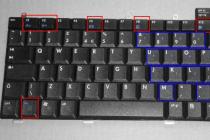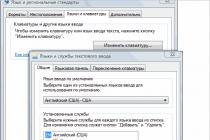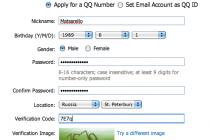
An example of a pulse charger for a car battery
Many car owners are familiar with the picture when they get behind the wheel and find that the battery charge is not enough to start the engine. In such a situation, you will have to think about charging a car battery. Therefore, you should always have a charger (charger) for a car battery on hand. Then you can recharge the dead battery in such a situation and start the engine. If you don’t have a charger yet, then it’s time to start choosing one. In this article, we will talk about pulse chargers for car batteries. Consider how they differ from other memory devices and give several examples of such devices with circuits.
Basically, the memory is divided according to their purpose into 3 large groups:
- chargers;
- starting-charging;
- launchers.
Charging device, as the name implies, they charge a car battery. Starting models are used when the engine needs to be started. And the models of the start-charging group are able to charge the battery and start the engine. It goes without saying that for the memory to work, a connection to electrical network. Moreover, starting and starting-charging models must be connected to the network at the time of starting the engine. Although there are portable chargers that have their own batteries inside, and start the engine using their energy. Such portable chargers are convenient to take with you on the road.

If you have a garage with electricity, then it makes sense to buy a start-charger. In this case, if necessary, you can start the engine with a planted battery. And if the memory will be used only to charge the battery, then take simple model no extra options.
By design, chargers are divided into pulse and transformer. The transformer models include a rectifier (diode bridge) and a step-down transformer. In the design of inverter chargers, an inverter works and short circuit protection is provided. Transformer-based models are large. Regular user it is recommended to choose impulse chargers, as they are more modern, compact and light. They cost a little more than transformer ones.
Example of a flash charger for a car battery
Next, the circuit and principle of operation of a pulsed charger from the book “Chargers”, authors Khodasevich A. G. and Khodasevich T. I. This charger, before charging, discharges the battery to a voltage of 10.5 volts. In this case, a current of C / 20 is used. C is the capacity of the battery. After that, the voltage on the battery rises to 14.2-14.5 volts using a charge-discharge cycle. In this case, the ratio of the magnitude of the charge and discharge currents is 10 to 1. The ratio of the charge and discharge time is 3 to 1. Below you can see the main characteristics of the charger:
The figure below shows circuit diagram pulse memory.

Memory operating modes:
- Switch SA3 is set to the "Charge" position. When the SA1 power button is enabled, the device works as normal charging with adjustable current. The discharge is not performed;
- Switch SA2 is set to "Desulfation". In this mode, the battery is charged and discharged. If the SB1 button is pressed, then before charging, the battery is discharged with a current of 2.5 amperes to a voltage of 10.5 volts. After that, the battery is charged to a voltage of 14.2-14.5 volts. At the end of the process, the memory will automatically turn off. If switch SA3 is in the "Repeated" position, this process is repeated until interrupted by the user. Used for battery recovery.
How does the device work? The mains filter C1, C2, C3, L1 is supplied with a voltage of 220 volts from the household power supply. The role of the filter is to delay interference from the mains. Next, the voltage is equalized on the diodes VD1, VD2, VD3, VD4 and smoothed using capacitor C5. The role of the resistor R3 is to limit the charging of the capacitor C5. U1 is an optocoupler that is responsible for controlling the voltage in the network. When there is no voltage, the DD2.3 element is blocked and the battery charging mode is turned off.
When the battery is connected, the comparator DA1 comes to position "1" and the transistor VT5 opens. In this position, the HL2 LED lights up, signaling the inclusion of the "Charge" mode. From the VT5 collector, voltage is supplied to DD1.3 (pin 9) and DD1.4 (pin 13). As a result, the low-frequency generator is unlocked. In this case, the duty cycle of the pulses is regulated by resistors R4 (discharge) and R6 (charge). The pulse frequency determines the capacitance of the capacitor C2.
When there is a charge at the output "10" DD1.3, the value is set to 1, which leads to the opening of the transistor VT1 and blocking the upper threshold of the comparator DA1 at around 14.2 volts. This is because the comparison of the battery voltage with the upper threshold is performed in the discharge mode. This prevents the comparator from triggering at a time when the battery is not yet charged. The voltage converter is started through the transistor VT2 and optocoupler U2 through high level DD1.3.
When a discharge occurs, the converter is blocked at the “10” output of DD1.3 and 1 is set at the “11” output of DD1.3. The keys on VT3 and VT4 are triggered. As a result, the battery is discharged by the HL1 light bulb. So that it does not burn out, the light bulb is designed with a double voltage margin.
When the SB1 "Start" button is pressed, the comparator DA1 goes to the "0" position. As a result, the transistor VT5 closes and the generator on DD1 and the voltage converter are blocked. At the "3" output DD2.1, D2.2 appears 1. If mains voltage applied, then 1 is set at the inputs of DD2.3. At the output of DD2.4, transistors VT7, VT8 fire and the HL4 LED lights up, which shows “Discharge”. In this mode, the discharge current is set through the HL3 bulb. Lamp voltage 12 volts, power 30 watts.
The discharge goes up to a battery voltage of up to 10.5 volts until the comparator R20, R21, DA1 is triggered. After that, the DA1 output is set to 1 again and the charge cycle begins. When the battery voltage reaches 14.2 volts, the comparator R11, R14, DA1 is triggered. In the case when the SA3 switch was set to the "Single" position, the HL2 LED will go out and the device will interrupt the charge. If SA3 has been set to "Multiple", it will run new cycle and the discharge will start.
Capacitors C6, C7 protect the circuit from interference and delay the operation of the comparators when switching from one mode to another. The DA3 stabilizer protects the microcircuits during a short-term loss of contact at the battery terminals, since in idle mode the voltage at the output of the converter jumps to 25 volts.
The developers of the device say that an initial adjustment of the threshold comparators may be required. To do this, the lights HL1, HL3 are turned off to reduce the load. Then terminals X1 and X2 are connected to the regulated power supply. The voltage of the power supply is set to 10.5 volts and by adjusting the resistor R21, HL2 is turned on. After that, a voltage of 14.2 volts is set and the resistor R11 is used to turn on HL2. After this adjustment, the bulbs are connected and ready to go.
Now a little about the components of this pulse charger. The transformer used is self-made based on the UPIMCT TV chokes, which are responsible for horizontal scanning. The transformer has the following winding:
- Windings I and II are wound in two wires, and III - in seven;
- There are 91 turns in the I winding (PEV-2 wire, diameter 0.5 mm);
- II winding has 4 turns of a similar wire;
- In the III winding there are 9 turns of PEV-2 wire (diameter 0.6 millimeters).
The manual for the memory notes that the winding must be neat without overlaps. The winding rows must be laid with capacitor paper. If there is not enough wire to fill the row, then the turns are distributed evenly. The same is true for the secondary winding. Do not forget to mark the beginning and end of the winding.
When assembling the transformer, a gap of 1.3 mm is set in the core using cardboard spacers. The role of the shunt is nichrome 0.2 mm thick and 0.1 ohm resistance. Resistors R11 and R21 are multi-turn (type SP5-2). Resistor R27 is of type SP3-4am.
Diodes VD13 and VD14 are of type KD213A(B). The authors of the scheme recommend replacing them with Schottky diodes of the KD2997A and KD2999A types. The VD12 diode is designed for a current of 2-3 amperes (30 kHz) and a voltage of 600-800 volts. Optocouplers U1 and U2 are of type AOT127. Their insulation voltage must be at least 500 volts.
It is reported that KT315 can be replaced by any KT312 and KT3102 rated at 30 volts. VT3 refers to the type KT801 A (B). VT7 is type KT819 A (B, C). Capacitors in the diagram:
- C2 can be replaced with electrolytic;
- C1, C19, C22 - type K78-2;
- C3, C4 - type K15-5, voltage not less than 600 V;
- C5 - capacitance 220 uF, 400 V. Or two 100 uF, 400 volts (type K50-32);
- The remaining capacitors in the diagram are of type K50-35.
In order to reduce the size and weight of the memory, the authors of the scheme propose to implement a cooling scheme with a small M1 fan. The diagram is shown below.

The fan will blow over heated parts. You can also install small radiators for parts VD13 and VD14. It is proposed to make them duralumin with dimensions of 5 by 80 by 65 millimeters. For VT1, the developers of the scheme propose to make a 22 by 15 by 30 mm duralumin radiator with fins.
The PA1 current indicator is also available as a possible upgrade. This is an ammeter with a measurement limit of 10 ─ 0 ─ 10 amperes. That is, charging and discharging current. The authors propose to use the M4761 device, which was previously used in tape recorders. The arrow on it is proposed to be shifted to the middle of the scale so that the charge and discharge current can be seen.
And you can also use an indicator showing the current on the LEDs with an interval of 0.5 amperes. The diagram of this device is shown below.

The polarity converter and amplitude amplifier are based on DA1 and DA2. The indicator is based on DA3. It is noted that for this indicator it is necessary to make an additional power converter based on DA1 and DA2 (voltage from -15 to + 15 volts).
On the Internet and books you can find a large number of circuits for pulse chargers for a car battery. But it is impossible to cover them within the framework of one article.
If the article was useful to you, distribute the link to the material in in social networks. This will help the development of the site. Vote in the poll below and rate the material! Leave corrections and additions to the article in the comments.
Homemade chargers have always been and will be in demand, as the number of motorists is growing, and industrial devices are expensive and do not always meet the needs of users. In connection with this trend, this article will consider the option of a charger for a current of up to 50 A and a power of 600 W. The output power, if desired, can be increased by making a small refinement.
It is easy to guess that this circuit is not with a conventional step-down transformer, otherwise the weight and size this device would be hefty. As usual, in Lately in all equipment, a circuit based on a pulse-width modulator is used here. Such circuits are highly efficient and do not require bulky transformers.
So, let's look at how the electronic circuit works.
The input voltage from the network passes through a filter consisting of chokes and capacitors. This is necessary to eliminate impulse noise that affects the operation of the modulator.
Further, the voltage passes through the rectifier diode bridge and electrolytic capacitors. It should be borne in mind that it is better to put capacitors with a voltage margin, 400 volts, otherwise they can shoot out after a while. This is the main problem with impulses.
The entire further circuit, consisting of powerful IRF 740 transistors, IR 2153 microcircuits and auxiliary elements, form a high-frequency pulse generator. The oscillator frequency is usually above 10 kHz and the human ear does not hear this sound, although a particularly sensitive ear can hear high-frequency beeping.
It is the microcircuit that serves as the control element, and the output stage is transistors that operate on the principle of keys.
Further, the high-frequency alternating voltage is lowered by the transformer to the desired value. The transformer has two secondary windings. The first is used to power the blower fan, and the second is actually for charging the battery. In the blowing circuit, everything is simple, there is one diode, a capacitor and a limiting resistor. Charging circuits have a diode bridge and several capacitors connected in parallel. large capacity. The higher the capacitance, the more stable and better the output voltage. If the dimensions of the case allow, you can put capacitors for 4700 microfarads and 50 V. Diodes should also be given special attention, they must be high-frequency and for a current of at least 30 A.
The resistance of 25 ohms in the gate circuit of the field-effect transistor is chosen in the range of 0.5-1 watts. As for the thermistor in the input circuit, its resistance should be 5 ohms, and the current for which it is rated? 5 A.
Power transistors must be installed on aluminum or copper heatsinks. If the radiator plate is common, the transistors are installed through mica gaskets. When using separate radiators, thermal paste is used for better heat dissipation.
At the beginning of the article it was said that it is possible to increase the output current and power. To do this, instead of the transistors indicated in the diagram, you need to put more powerful ones and, accordingly, provide them with a large heat sink. The same applies to the input and output bridge diodes.
I would like to note that many components, such as a transformer, diodes and capacitors, can be taken from an unnecessary computer power supply.
With serviceable parts and proper installation, the device should immediately start working. The output voltage can be measured with a multimeter. If it is within 15 V, then everything is working. In the considered version of the memory, there is no protection against short circuit at the output and wrong polarity. This must be taken into account and be careful. In all other respects, the scheme is quite simple and effective.
Do-it-yourself converter from an uninterruptible power supply: inverter circuit 12 to 220 from a UPS
The scheme of such impulse block nutrition on the Internet is quite common, but some of them made mistakes, but I, in turn, slightly modified the scheme. The driving part (pulse generator) is assembled on an IR2153 PWM controller. The circuit is a typical half-bridge inverter with a power of 250 watts.
Pulse charger for charging batteries circuit
The power of the inverter can be increased to 400 watts by replacing the electrolytic capacitors with 470 uF 200 volts.
Power switches with a load of up to 30-50 watts remain cold, but they need to be installed on heat sinks, there may be a need for air cooling.

A ready-made transformer from a computer power supply was used (literally any one will do). They have a 12 volt bus up to 10 amps (depending on the power of the unit in which they were used, in some cases a 20 amp winding). 10 Amperes of current is enough to charge powerful acid batteries with a capacity of up to 200A / h.

Diode rectifier - in my case, a powerful 30 Amp Schottky diode assembly was used. There is only one diode.
ATTENTION!
Do not short the secondary winding of the transformer, this will lead to a sharp increase in current in the primary circuit, to overheating of the transistors, as a result of which they may fail.

Choke - was also removed from a pulse power supply, if desired, it can be excluded from the circuit, it is used here in a surge protector.

A fuse is also not required. Thermistor - any (I took from a non-working computer power supply). The thermistor preserves the power transistors during voltage surges. Half of the components of this power supply can be soldered from non-working computer PSUs, including electrolytic capacitors.

Field-effect transistors - I installed powerful power switches of the IRF740 series with a voltage of 400 Volts at a current of up to 10 Amps, but you can use any other similar switches with an operating voltage of at least 400 Volts with a current of at least 5 Amps.

It is not advisable to add additional measuring instruments, since the current here is not quite constant, a pointer or electronic voltmeter may not work correctly.
The ready-made charger is quite compact and lightweight, it works completely silently and does not heat up at idle, it provides a sufficiently large output current. The cost of components is minimal, but on the market such memory costs $ 50-90.
A good and interesting circuit for a high-quality charger based on the IR2153 chip, a self-clocked half-bridge driver, which is quite often used in electronic ballasts for energy-saving lamps.
The scheme is powered by the network AC voltage 220 volts, its output power is about 250 watts, which is about 20 amperes at 14 volts of output voltage, which is quite enough to charge car batteries.
At the input there is a surge protector, and protection against voltage surges and overload of the power supply. The thermistor protects the keys during initial moment connecting the circuit to a 220 volt network. Then the mains voltage is rectified by a diode bridge.
Through the limiting resistance of 47 kOhm, the voltage passes to the generator microcircuit. impulses certain frequency follow the gates of high-voltage switches, which, when triggered, pass voltage into the mains winding of the transformer. On the secondary winding, we have the voltage required to charge the batteries.
The output voltage of the charger depends on the number of turns in the secondary winding and operating frequency generator. But the frequency should not be raised above 80 kHz, optimally 50-60 kHz.
High voltage switches IRF740 or IRF840. By changing the capacitance of the capacitors in the input circuit, you can increase or decrease output power charger, if necessary, you can reach 600 watts of power. But we need 680 microfarad capacitors and a powerful diode bridge.
The transformer can be taken ready from a computer power supply. And you can do it yourself. The primary winding contains 40 turns of wire with a diameter of 0.8 mm, then we apply a layer of insulation, wind the secondary winding - somewhere around 3.5-4 turns from a rather thick wire or use a stranded wire.
After the rectifier, a filter capacitor is installed in the circuit, the capacitance is not more than 2000 microfarads.
At the output, it is necessary to put pulse diodes with a current of at least 10-30A, the usual ones will immediately burn out.
Attention, the memory circuit does not have short circuit protection and will immediately fail if this happens.
Another version of the charger circuit on the IR2153 chip |

The diode bridge consists of any rectifier diodes with a current of at least 2A, it can be more and with a reverse voltage of 400 Volts, you can use a ready-made diode bridge from an old computer power supply in it with a reverse voltage of 600 Volts at a current of 6 A.
To ensure the required power supply parameters of the microcircuit, it is necessary to take a resistance of 45-55 kOhm with a power of 2 watts, if you cannot find these, connect several low-power resistors in series.
Every car enthusiast has for a 12 V battery. All these old chargers work and perform their functions with varying degrees of success, but they have a common drawback - they are too large in size and weight. This is not surprising, since only one power transformer at 200 watts can weigh up to 5 kg. Therefore, I decided to assemble a pulse charger for a car battery. On the Internet, or rather on the Kazus forum, I found a diagram of this memory.
Schematic diagram of the memory - click to increase the size
Got it, works great! I charged a car battery, set the charger to 14.8 V and a current of about 6 A, there is no overcharging or undercharging, when the voltage at the battery terminals reaches 14.8 V, the charging current drops automatically. Also charged helium lead battery From the uninterruptible PC - it's normal. This charger is not afraid of short circuits at the output. But from a polarity reversal it is necessary to do protection, he did it on a relay.

See the printed circuit board, datasheets for some radio elements and other files on the forum.

In general, I advise everyone to do it, since this memory has many advantages: small size, the base of radioelements is not in short supply, you can buy a lot, including ready-made pulse transformer. I bought it myself in the online store - they sent it quickly and cheaply. I’ll make a reservation right away, instead of the VD6 Schottky diode (thermal stabilization), I just put a resistance of 100 Ohms, a charger and it works great with it! The circuit was assembled and tested:Demo.














